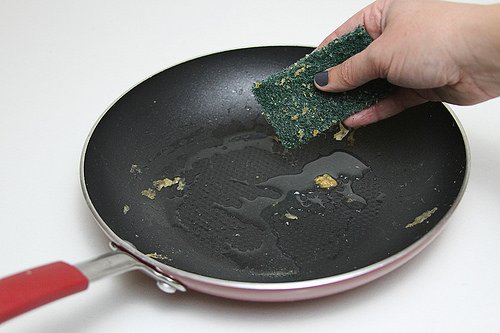Sponges help us to scrub away dirt, food particles, and grime that may be lingering around the kitchen. But this doesn’t mean that they aren’t full of bacteria that can linger on your freshly “cleaned” dishes and counters! Here are some pretty disgusting reasons why you need to swap out your sponges more often.
1. Sponges Are Teeming With Bacteria

Sponges are used to clean everything from pots and pans to toilet seats. With all their uses, it’s no surprise they get kinda gross. However, it’s important that you change your sponges every week, at least every 2 weeks. During a study, researchers found an abundance of microbes that colonize sponges, including pathogens that lead to illness and disease. If you choose to utilize sponges for many of your most common household chores, only delegate certain ones to do particular jobs.
Another way of alleviating the spread of bacteria is to avoid using your sponge to clean up milk, blood from meat, dirt from fruits and vegetables or other liquids where pathogens are present. Instead, use a cleaner or powerful dish soap to help dislodge any ingrained particles, then wipe away with a clean paper towel and discard. Not only will this help keep harmful bacteria at bay, but your sponges will be that much safer to use. Likewise, if you happen to use your sponge daily, clean and rinse them after each use, then store them in a well-ventilated area to air-dry.
2. Sponges Stink

Honza Hruby/Shutterstock
Becoming too attached to your sponge may cause them to produce a nasty odor, which can then permeate your home. Smelly sponges mean food particles lodged in the pores have begun to decompose, encouraging the growth of odor-causing bacteria, yeasts, and mold. E. Coli and salmonella, the most common forms of bacterial strains, which are found in the juices of raw meats, eggs, and unwashed fruits and vegetables, are also some causes for many food-related illnesses within households. While not all bacteria that are picked up by sponges are necessarily harmful, you can help kill some strains by placing your wet sponge in the microwave for at least 30 seconds to get rid of some of the germs. Never put a dry sponge in the microwave.
No matter how often you clean your sponge, germs have the potential to colonize and grow. Your sponge will only last for approximately 30 days if you’re sanitizing daily. Otherwise, it is best to throw out your sponge or swap it every 2 weeks minimum. Ideally every week. Mold and mildew can also be eliminated by placing your sponges in the dishwasher or dousing them in full strength vinegar for a few minutes.
3. Sponges Are Dirtier Than A Toilet Seat

You probably don’t spend a lot of time thinking about how dirty a sponge is, but what you don’t know can hurt you. Truthfully, sponges are dirtier than a toilet seat, with at least 10 million bacteria per square inch on a single sponge, especially if you are allowing them to sit in dirty water that is riddled with bacteria. Even scrubbing leftover meats, greasy foods, cooked vegetables can create a cesspool of dirt and grime that bacteria love to swim in. No matter how much you clean your home, it’s still a hotbed for ailments, such as the common cold and diarrhea, so it’s important that you’re not only throwing out overdue sponges, but you’re taking special precautions to kill disease-causing germs.
Although toilets can be extremely dirty, depending on how often you clean them, it’s rare to find deadly bacteria, like cholera lingering in the common American bathroom. Though toilets are contaminated with fecal-borne material that can make you ill, it can be avoided with the proper restroom safety precautions.
Sponges can be nasty, but they can also help leave your home sparkling clean if you maintain them properly. Keep these tips in mind if you prefer to use sponges for all your home-cleaning.
